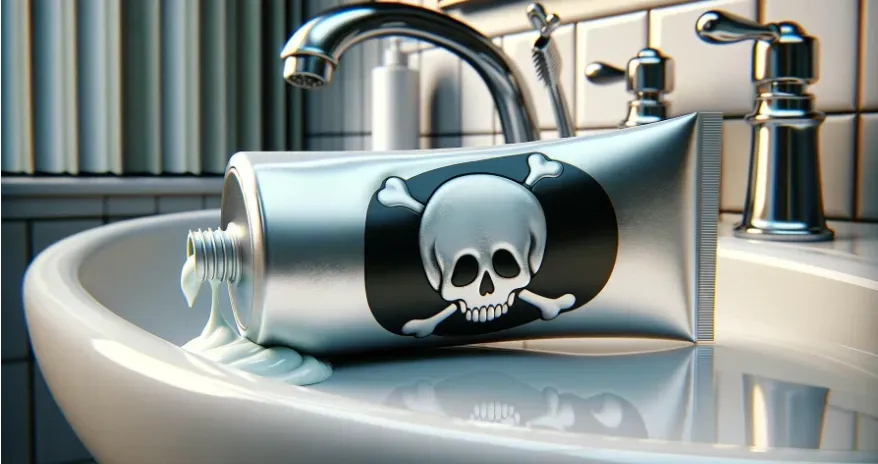Fluoride vs. Non-Fluoride Toothpaste: How to Choose What's Best for Your Teeth
Understanding Fluoride in Toothpaste
What Is Fluoride and How Does It Work?
Fluoride, a naturally occurring mineral found in various amounts in water and foods, plays a critical role in dental health. When integrated into toothpaste, fluoride acts by replacing hydroxyapatite in the teeth to form fluorapatite, a much harder and more acid-resistant material. This transformation not only helps fortify the teeth's enamel but also makes them more resistant to decay, a significant benefit given the everyday exposure to sugars and acids in our diet.
The Role of Fluoride in Tooth Decay Prevention
Consistently used in dental care products since the mid-20th century, fluoride has been recognized for its profound effect on reducing tooth decay. Research demonstrates that fluoride toothpaste can significantly decrease the prevalence of cavities by facilitating the remineralization process, essentially 'rebuilding' enamel on a microscopic level. This action helps to counteract the early stages of tooth decay before they evolve into more serious dental issues.
Key Points:
- Fluorapatite Formation: Fluoride helps form fluorapatite, which is more resistant to decay than the natural enamel.
- Cavity Reduction: It actively reduces the occurrence of cavities by strengthening tooth enamel.
Remineralization and Antibacterial Properties of Fluoride
Beyond its role in decay prevention, fluoride toothpaste offers significant antibacterial properties. Fluoride disrupts the metabolism of bacteria that form dental plaques, decreasing their ability to produce acid which is harmful to tooth enamel. This dual action—remineralizing enamel and reducing plaque formation—establishes fluoride as a cornerstone in oral hygiene regimens aimed at maintaining tooth integrity and health.
Benefits:
- Enhances Tooth Enamel: Strengthens enamel by replenishing essential minerals.
- Reduces Bacterial Growth: Inhibits the growth of bacteria responsible for tooth decay and gum disease.
Risks and Concerns of Fluoride Use
Dental Fluorosis: Causes and Prevention
Dental fluorosis occurs when younger children, typically under six years old, ingest excessive fluoride during the years of tooth development. The condition is characterized by mild discoloration and, in severe cases, structural damage to the teeth. Prevention focuses on monitoring fluoride intake from all sources, including toothpaste, and ensuring children use an appropriate pea-sized amount and avoid swallowing it during brushing.
Prevention Tips:
- Correct Toothpaste Amount: Ensure young children use only a pea-sized amount of toothpaste.
- Supervision: Adults should supervise children’s brushing to minimize swallowing of toothpaste.
Understanding Toxicity and Sensitivities
While fluoride is beneficial in small, controlled doses, excessive exposure can lead to several issues, including skeletal fluorosis—a condition impacting bones and joints. Sensitivity to fluoride, although rare, does occur and can manifest as mild gastrointestinal distress or skin rashes. These sensitivities necessitate a careful approach to fluoride use, balancing its dental benefits against potential health risks.
Concerns:
- Skeletal Fluorosis: Excessive fluoride can lead to pain and damage to bones and joints.
- Fluoride Sensitivity: Some individuals may experience allergic reactions or other forms of sensitivity to fluoride.
Exploring Non-Fluoride Toothpaste Alternatives
Key Ingredients in Non-Fluoride Toothpastes
Non-fluoride toothpastes utilize various active ingredients to maintain dental health. Nano-hydroxyapatite (n-HA), a bio-compatible material naturally found in teeth, is increasingly popular for its ability to bond with and help repair tooth enamel, akin to fluoride. Additionally, substances like xylitol, a sugar alcohol with antibacterial properties, and baking soda, known for its gentle abrasive effect, contribute to cleaning and protecting the teeth without the use of fluoride.
Common Ingredients:
- Nano-Hydroxyapatite: Helps repair and strengthen tooth enamel.
- Xylitol: Reduces decay-causing bacteria.
- Baking Soda: Neutralizes harmful acids and polishes teeth.
Nano-Hydroxyapatite and Its Benefits
Nano-hydroxyapatite is revered for its close compositional resemblance to human enamel, making it highly effective at remineralizing teeth and filling micro-scratches on the enamel surface. Studies suggest that toothpastes containing n-HA can be as effective, if not more so, at preventing decay and strengthening teeth compared to their fluoride counterparts. This makes n-HA an excellent choice for those looking for effective fluoride-free alternatives.
Other Ingredients: Xylitol, Baking Soda, Essential Oils
In addition to nano-hydroxyapatite, non-fluoride toothpastes often include xylitol which helps reduce decay-causing bacteria in the mouth. Baking soda neutralizes harmful acids, and essential oils, which provide natural antibacterial and anti-inflammatory benefits. This blend of ingredients not only cleans teeth effectively but also promotes a balanced oral microbiome.
Benefits and Drawbacks of Non-Fluoride Toothpaste
Remineralization and Enamel Protection
Non-fluoride toothpastes that contain ingredients like nano-hydroxyapatite are excellent for those who prefer not to use fluoride but still wish to protect their enamel and promote remineralization. Such alternatives are not only effective in enhancing tooth strength and health but also offer a natural approach to oral care, crucial for those with specific health sensitivities or philosophical preferences against fluoride.
Suitability for Individuals with Sensitivities
For individuals with sensitivities or allergies to fluoride, non-fluoride toothpastes provide a vital alternative that mitigates the risk of adverse reactions. These formulations cater to personal health needs while still supporting effective dental care, an essential factor for comprehensive oral health strategies.
How to Choose the Best Toothpaste for Your Oral Health
Factors to Consider When Deciding Between Fluoride and Non-Fluoride
Choosing between fluoride and non-fluoride toothpaste involves evaluating several personal factors. Assessing your risk for tooth decay, based on diet, oral hygiene habits, and historical dental health, is crucial. Additionally, consider your daily fluoride exposure from other sources like water and diet, which might influence your need for fluoride toothpaste.
Understanding Your Risk for Tooth Decay
Your risk for tooth decay significantly influences the type of toothpaste you should use. High-risk individuals, especially those frequently experiencing cavities or with numerous dental restorations, might benefit more from fluoride toothpaste. Conversely, those with low decay risk and good oral hygiene might opt for effective fluoride-free alternatives without compromising their dental health.
Dietary and Environmental Fluoride Exposure
The level of fluoride in your local water supply and diet should also guide your toothpaste choice. In areas with fluoridated water, the additional fluoride from toothpaste might be unnecessary, or in some cases, undesirable. Conversely, in communities without fluoridated water, fluoride toothpaste can play a vital role in maintaining dental health.
Allergies, Sensitivities, and Personal Preferences
Personal health conditions, such as allergies or sensitivities to fluoride, greatly impact toothpaste choice. Additionally, ethical or ecological concerns might lead some to prefer naturally derived, non-fluoride toothpaste options. It’s essential to align your choice with both health needs and personal values to ensure satisfaction and adherence to your dental care routine.
Complementary Oral Care Practices to Support Toothpaste Efficacy
Brushing, Flossing, and Rinsing
Effective oral hygiene extends beyond the choice of toothpaste. Regular brushing, using the correct technique, combined with daily flossing and the use of an antimicrobial mouthwash, can significantly enhance oral health. These practices help remove food particles and plaque, reduce the risk of gum disease, and support the overall effectiveness of your chosen toothpaste.
Regular Dental Check-Ups and Preventive Care
Regular visits to the dentist for check-ups and preventive treatments such as cleanings and fluoride treatments (if appropriate) play a crucial role in maintaining oral health. These visits allow for early detection and management of potential dental issues and provide an opportunity to discuss and reassess your toothpaste choices and oral hygiene practices.
Conclusion: Finding Your Perfect Oral Health Solution
Balancing Safety, Effectiveness, and Environmental Impact
Choosing the right toothpaste is about balancing the benefits of fluoride for cavity protection against potential risks and personal preferences. Whether opting for fluoride or fluoride-free toothpaste, it’s crucial to consider factors such as personal health needs, environmental impact, and the overall effectiveness of the product. By carefully considering these aspects, you can make informed decisions that align with your health priorities and lifestyle, ensuring optimal dental health and well-being.





